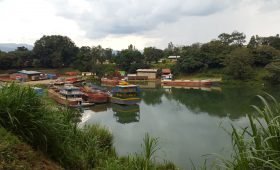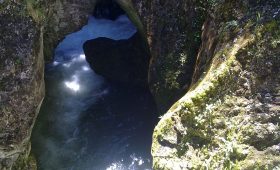Exploring Tiwanaku, Bolivia
Ancient History and Cultural Significance
Tiwanaku is a pre-Columbian archaeological site located near Lake Titicaca in Bolivia. It is one of the largest archaeological sites in South America, covering approximately 4 square kilometers. The site is a testament to the advanced engineering and artistic skills of the ancient Aymara civilization, which thrived in the region long before the Inca Empire. Recognized as a UNESCO World Heritage Site, Tiwanaku offers a unique opportunity to explore the cultural heritage of Bolivia and understand the historical significance of the Aymara people.
Key Landmarks
When visiting Tiwanaku, several landmarks stand out. The Gate of the Sun is a massive stone gateway adorned with intricate carvings, believed to have served as a ceremonial entrance. The Akapana Pyramid, a stepped pyramid, was once a religious and administrative center. Climbing to the top offers panoramic views of the surrounding landscape. The Kalasasaya Temple features massive stone monoliths and carvings, providing insight into the religious practices of the Tiwanaku civilization.
Best Time to Visit
The optimal time to visit Tiwanaku is during the dry season, from May to October. During this period, the weather is mild, and rainfall is minimal, offering clear skies for exploration. Keep in mind that Tiwanaku is situated at an elevation of over 13,000 feet (4,000 meters), so it’s crucial to acclimatize to the altitude. Take it easy during your first few days, stay hydrated, and listen to your body to avoid altitude sickness.
Getting There
Reaching Tiwanaku from La Paz is straightforward. You can take a taxi to the cemetery (Cementerio) in La Paz, where minibuses head to Tiwanaku. The journey takes about 90 minutes and costs between Bs. 15-20. Alternatively, you can book a guided tour through local operators in La Paz, which often include transportation, entrance fees, and expert guides. If you’re traveling independently, consider stopping in Laja, a town with a notable church and local bread, on your way to Tiwanaku.
Local Transportation
Once at Tiwanaku, the archaeological site is easily navigable on foot. The main attractions are within walking distance of each other, but be prepared for uneven terrain. Comfortable shoes are a must. For a more immersive experience, consider renting a bicycle near the entrance to explore the site and its surroundings at your own pace.
Practical Tips
- Tiwanaku is a significant archaeological site, but be aware that the presentation and signage may not meet expectations compared to other sites. The museums are small and not well-maintained.
- Photography is not allowed inside the museums, although some visitors do take photos discreetly.
- Local vendors sell pottery, scarves, and crafts. Prices are generally reasonable, but be mindful of the weight when packing.
- Respect the site’s rules: do not cross over signs or fences to avoid upsetting security guards.




